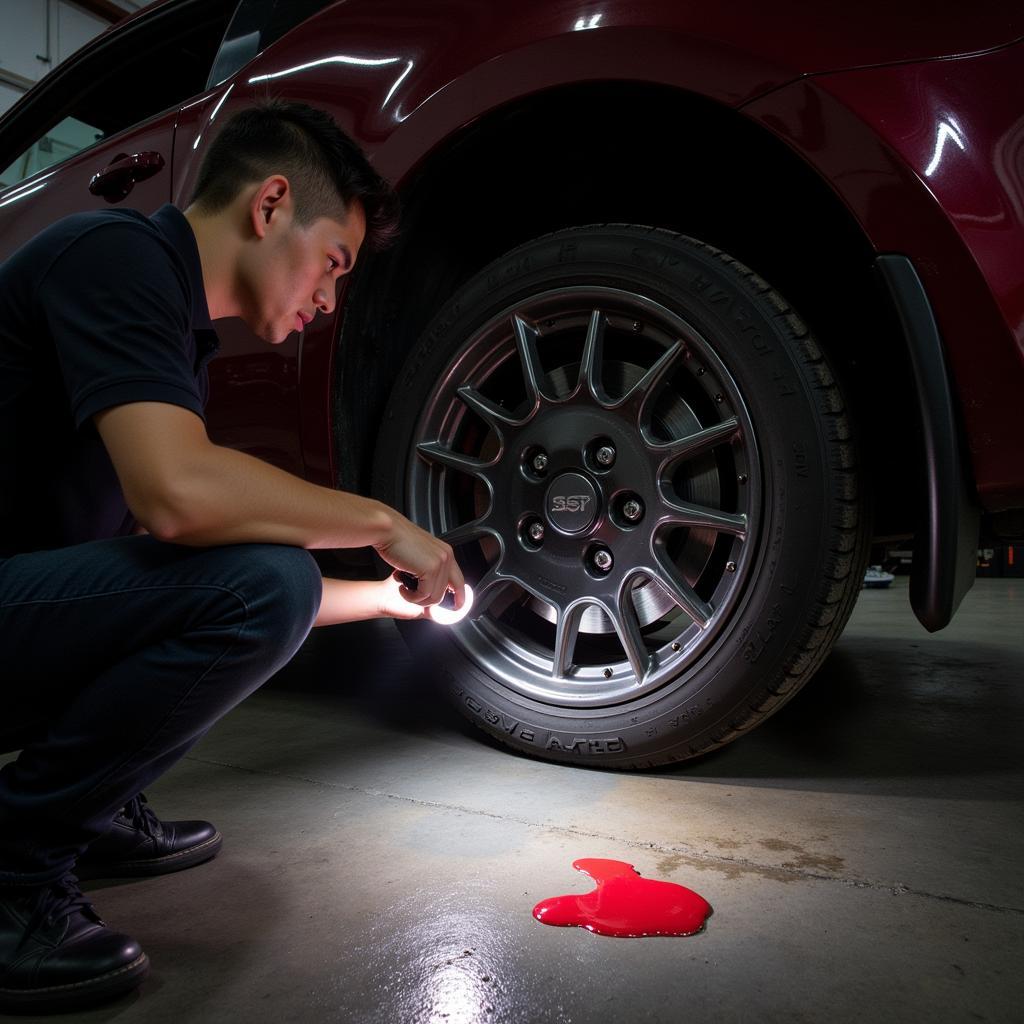Experiencing severe transmission slippage can be a frustrating and potentially costly issue. If your car feels like it’s struggling to shift gears, revs unexpectedly, or loses power while driving, you’re likely dealing with this problem. This article will guide you through the potential causes, diagnostic steps, and solutions for How To Fix A Car With Severe Transmission Slippage.
Understanding Transmission Slippage
Transmission slippage occurs when the connection between the engine and the wheels, facilitated by the transmission, is interrupted. This disruption prevents power from being effectively transferred, resulting in poor acceleration, reduced fuel efficiency, and potential damage to the transmission. A variety of issues can cause this, from low transmission fluid to more serious mechanical problems. Ignoring these signs can lead to complete transmission failure, requiring a costly rebuild or replacement.
can you fix transmisson on cadillac car 2009
Diagnosing the Problem: How to Pinpoint the Cause of Slippage
Checking the Transmission Fluid
The first step in diagnosing transmission slippage is to check the transmission fluid. Low fluid levels can significantly contribute to slippage. Make sure your car is parked on a level surface, with the engine running and in park. Locate the transmission dipstick (refer to your owner’s manual), remove it, wipe it clean, reinsert it, and then remove it again to check the fluid level. The fluid should be between the minimum and maximum marks and appear clean, reddish, and free of burnt smell.
Inspecting for Leaks
If the fluid level is low, you need to investigate why. Look for leaks around the transmission pan gasket, seals, and lines. A leak can lead to low fluid levels and subsequently, transmission slippage.
 Checking for transmission fluid leaks underneath a vehicle
Checking for transmission fluid leaks underneath a vehicle
Listening for Unusual Noises
Pay attention to any unusual noises coming from the transmission. Grinding, whining, or clunking sounds can indicate internal damage, such as worn gears or bearings.
Fixing the Slippage: From Simple Fixes to Complex Repairs
Addressing Low Fluid Levels
If the fluid level is low, adding the correct type of transmission fluid (consult your owner’s manual) might resolve the issue. However, if the fluid is dirty or smells burnt, a complete fluid change and filter replacement are recommended.
Repairing Leaks
If you’ve detected a leak, repairing it is crucial. This might involve replacing the transmission pan gasket, seals, or lines. The complexity of this repair depends on the location and severity of the leak.
Addressing Internal Damage
Internal damage, such as worn clutches, bands, or solenoids, requires more extensive repairs. This often necessitates removing and rebuilding or replacing the transmission, a complex and expensive procedure best handled by a qualified transmission specialist.
“Regular transmission maintenance is key to preventing slippage,” says John Miller, a seasoned automotive technician with over 20 years of experience. “This includes regular fluid and filter changes, as well as addressing any leaks promptly.”
How to Fix a Car with Severe Transmission Slippage: A Summary
Severe transmission slippage is a serious issue that requires prompt attention. By understanding the potential causes, following the diagnostic steps outlined above, and taking the appropriate action, you can avoid costly repairs and extend the life of your transmission.
“Don’t ignore the signs of transmission slippage,” advises Sarah Johnson, a certified automotive instructor. “Early diagnosis and intervention can save you significant time and money in the long run.”
Don’t hesitate to contact us at AutoTipPro for assistance with your transmission issues. Our expert technicians are ready to help.
Phone: +1 (641) 206-8880
Office: 500 N St Mary’s St, San Antonio, TX 78205, United States
can you fix transmisson on cadillac car 2009
FAQ
-
What does transmission slippage feel like? You might feel the engine revving high without a corresponding increase in speed, or the car might feel like it’s struggling to shift gears.
-
Can I drive my car with transmission slippage? Driving with severe slippage can cause further damage. It’s best to have the issue addressed as soon as possible.
-
How much does it cost to fix transmission slippage? The cost depends on the underlying cause. A simple fluid change might be inexpensive, while a transmission rebuild can be significantly more costly.
-
How can I prevent transmission slippage? Regular transmission maintenance, including fluid and filter changes, is key to preventing slippage.
-
What is the most common cause of transmission slippage? Low transmission fluid is a common culprit, often caused by leaks.
-
Is it difficult to fix transmission slippage myself? Some fixes, like adding fluid, are relatively simple. However, more complex repairs are best left to qualified technicians.
-
What should I do if my car starts slipping gears while driving? Pull over safely and assess the situation. Check the fluid level if possible. If the problem persists, it’s best to have the car towed to a repair shop.




Leave a Reply